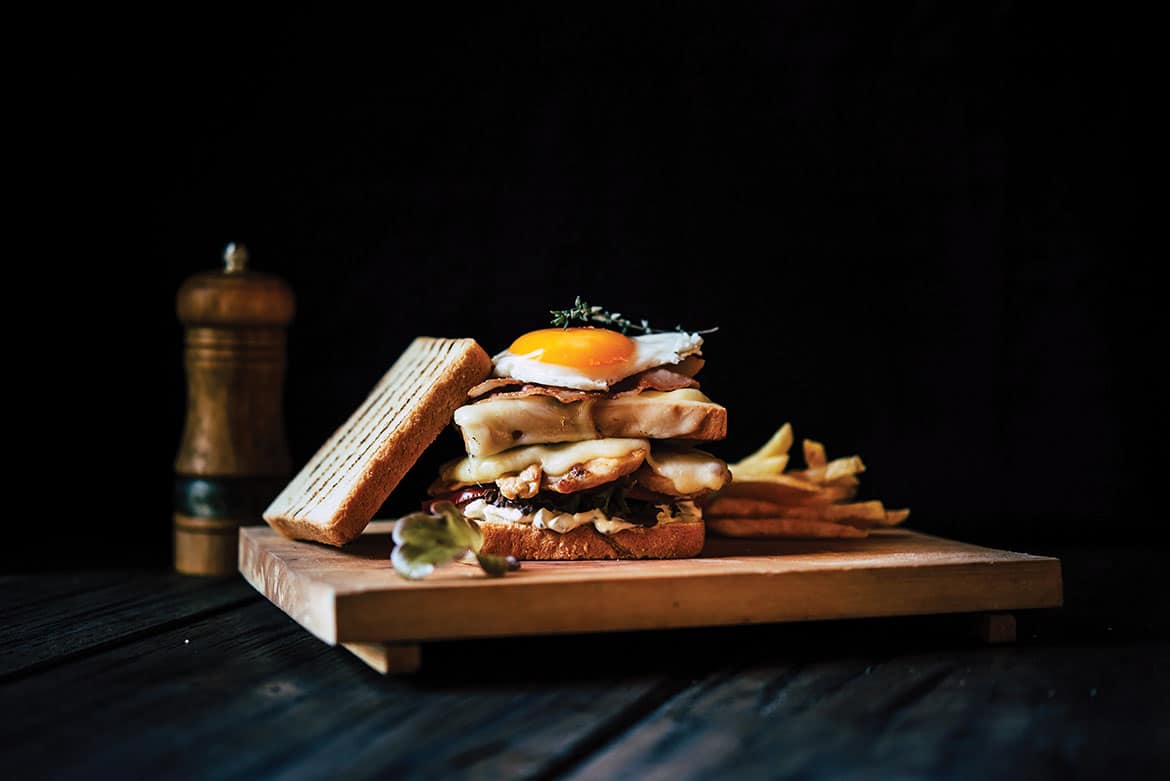Diet, diet, diet! Tweak the most common ripping-up diets and lose more body fat, have more energy and build extra muscle.
By Dale Taylor.
No diet is perfect, nor should it be. We all respond uniquely to different approaches and have different tastes. Fortunately, with a new diet book weighing down Amazon’s cybernetic shelves every month, you’ve got a wealth of fads, tricks and fork-based tomfoolery to choose from. However, with summer almost here, you’ll want to pick a side. Will it be low-carb or high-fat and high-protein or South Beach or Atkins? You no doubt want to know which will produce the most dramatic results if you’re still training hard. After all, life doesn’t slow down when your plate gets a facelift. You still need oomph to bring in the wedge, whack a golf ball and be the life of the party at your favourite watering hole. To make sure you can still do all this and shed the most body fat, we’ve rounded up the most popular weight-loss strategies and adjusted them to accelerate the speed of your results. Each tweak supports the calorie-culling and energy needs of a hard-training and hard-living man like yourself. Stick to them for a month and by the time it’s warm enough to get a tan, your physique will be ripped enough to become the next flavour of the month.
REVERSE PYRAMIDING
- Common strategy: Turning the traditional food pyramid upside down.
Back in the 1980s, the US Department of Agriculture released the food pyramid that became rooted in our school syllabus. It was bottom-heavy with carbs, with fats at the top, yet 30 years on, this carb-heavy approach has spawned an obesity boom — seems Uncle Sam may have got it wrong. In response, nutritionists reverse-engineered it, putting foods in this descending order: veggies, fruit, protein, fats, then carbs.
“This is a far healthier option, as you’ll get plenty of nutrient-dense foods, but still reduce your calories,” says Matt Lovell, a sports nutritionist and author of A Fist Full of Food.
- Stealth tweak
Stick to the reverse food pyramid and when your rate of fat loss starts to taper off, employ a secret weapon: protein fasting. This is where you gradually reduce the amount of protein you eat each day.
“Assuming you’re eating six meals a day, you’d start by removing all the protein from your final meal of the day (dinner or dessert),” says Lovell. This is day one. On day two, you’d only eat four meals with protein (breakfast, snack, lunch, snack) and two with no protein at all (dinner and dessert). By day six you’ll eventually be eating no protein at all — just carbs and fat. “This not only limits your calories but primes your body for a muscle-building spurt because of the forced protein deprivation.” So when you return to your normal reverse pyramid diet (day 7), where you’re eating protein in every meal, you’ll start to shunt on more muscle, which in turn will burn additional fat, giving you that large but lean look.
- Sample zero-protein day
Breakfast: Oats with oat or rice milk
Snack: Banana, two slices of rye toast with jam
Lunch: Mixed vegetable soup with rye toast
Snack: Fruit salad
Dinner: Vegetable stir-fry, white rice.
FRED FLINTSTONE’S DIET
- Common strategy: Following the Palaeolithic diet by eating like a caveman.
The theory is that we still have the same bodies as cavemen. This diet suggests we eat the strictly unprocessed foods they would have had access to. This involves eating grass-fed meats, fish, veggies, fruit, roots and nuts, but excludes grains, legumes, dairy, salt, oils and sugar. In short, everything that can be picked or produced in nature, without being farmed. “This means you’ll still be eating a high-protein diet, getting 60-70 percent of your calories from animal products and the rest from plants,” says Lovell. “Animal products require more calories to digest and leave you feeling fuller for longer, so your overall calorie intake will be reduced.”
- Stealth tweak
Cavemen would have copped a hoof to their grill if they’d tried to sidle up to a cow’s udder. However, dairy is no longer a life-threatening pursuit, and drinking milk will actually accelerate your weight loss. Research in the American Journal of Clinical Nutrition found that blokes trying to get leaner who had high calcium (580mg of dairy calcium) and vitamin D intakes were 6kg leaner after two years than blokes who only had 150mg of dairy calcium. “It was known that overweight people had lower levels of serum vitamin D, but this is the first study that actually shows that serum vitamin D increased among people who lost weight,” says Dr Danit Shahar, the study author. “This result lasted throughout the two years that the study was conducted, regardless of what diet they used.”
- Sample Paleo diet with added dairy (from the book, Paleo Comfort Foods)
Breakfast: Protein smoothie: 4-5 egg whites, berries, banana, ½ cup milk, ½ cup plain yogurt
Snack: 80g almonds, 20g cheese
Lunch: Chicken breast, with mashed cauliflower and cheese and asparagus
Snack: 50g beef jerky
Dinner: Grilled zucchini, squash, mushrooms, capsicum, with cumin, olive oil and a slab of salmon.
EAT LIKE USAIN BOLT
- Common strategy: Eating the way athletes do.
This used to be the sole preserve of blokes with tattoos of the Olympic rings, but the information is more than simple enough for the average weekend warrior to follow: you calculate your nutrient needs based on your energy needs and body weight. “So endurance athletes will need about 7-9g of carbs and 1.5g of protein per kilo of bodyweight, while strength athletes should eat 3-4g of carbs and 2g of protein per kilo of bodyweight,” Lovell says. These magic ratios help athletes recover and perform at their ultimate peak, though there is a way you can put your weight loss and performance a big nose ahead of all your competition.
- Stealth tweak
These formulas are often taken from studies that are geared more towards endurance athletes who are sweating for 2-4 hours at a time. And they don’t take into account the fact that there are certain occasions where more calories and protein actually do give you a lot more muscle. Research in Cellular and Molecular Life Sciences found that guys eating as much as 3.3g of protein per kilo of bodyweight added significantly more muscle than the guys following the more traditional guidelines (above). However, there was an important trick: they only upped their protein for four weeks, as their gains definitely began to taper off at that point. So when you’re about to hit a solid bout of training, you can flex your protein needs for a short time, and get some big-time muscle gains that will help you fry more calories during everyday activities such as sprinting for the bus or chasing after the dog.
- Sample high-protein plan
Breakfast: Smoothie with 45g whey protein, banana, oats, raspberries, 200ml milk
Snack: Two boiled eggs, 50g beef jerky
Lunch: Chicken-and-vegetable stir-fry with couscous
Snack: Avocado, tuna and cheese on oat cakes
Dinner: 400g fillet steak, spinach, mushrooms, 50g cooked quinoa.
Calculating your nutrient needs based on your body weight and energy needs helps you recover and perform at your peak.
READING YOUR GIRL’S DIET BOOK
- Common strategy: The Atkins approach of low carbs and high protein.
If a few extra fat cells have taken up residence over your once-taut abdomen, carbohydrates are thought of as the pitchfork-wielding devil responsible for these squatters — and for very good reason. Research at the Stanford University School of Medicine compared four diets over the long term and found that the famous Atkins approach came out way in front — proving carbohydrates can make you gain some serious weight. “Protein is more satiating than carbohydrates or fats, which may have helped those in the Atkins group to eat less without feeling any sense of hunger,” said researcher Dr Christopher Gardner.
- Stealth tweak
The hassle with the low-carb approach is that it leaves you feeling more lifeless than a uni student’s house plant. And if you’re looking to do some fair dinkum exercise, then you won’t have very much juice in the engine, reducing your muscle-building and fat-burning opportunities. The trick with carbs is to get the timing right.
“Eat 40-50g of carbs (along with your protein shake) about 40 minutes before your gym session, then another 40g afterwards,” Lovell says. This will fuel and refuel the toughest sweat sessions so you can train like a man possessed, not a man following a little girl’s diet.
- Sample modified Atkins plan
Breakfast: 3 eggs, 4 strips of bacon
Snack: Beef jerky
Lunch: 250g fillet steak, Greek salad
Pre-exercise snack: Protein shake with added carbs (try blending 60g of semolina into your shake)
Exercise
Post-exercise snack: Protein shake with added carbs
Dinner: Pork cutlets, cauliflower, spinach, asparagus.
CUSTOM-MADE NOSH
Getting a tailored nutrition plan used to cost as much as a weekend away, but now they’re cheap enough for anyone to get one.
- Common strategy: Tailored personalised eating plan from a nutritionist.
Getting a tailored nutrition plan is like an HD DVD player — they used to cost as much as a weekend away, but now they’re cheap enough for anyone to get one. For $50-$175, you’ll usually get an hour-long one-to-one session.
- Stealth tweak
Firstly, you’re better off seeing a dietitian over a nutritionist. In Australia, there aren’t regulations that govern what qualifications a person needs to consult under the nutritionist banner. So someone with honours from the University of Mickey Mouse could wind up giving you less than perfect advice. A dietitian, on the other hand, has to earn their qualifications via a four-year course from a university and then register with the Dietitian’s Association of Australia. The big difference is that dietitians can prescribe certain foods as medicine, so not only will you train harder, but you’ll feel better. The key to success? Don’t be a smart-arse and try to outthink or adjust your personalised plans to your own tastes and preferences. If you only follow 70 percent of them, they’ll only be 70 percent effective, which is the difference between the last roll of fat being visible or invisible.
SOUTH BEACH BODY
- Common strategy: An eating plan to keep your ticker in good nick.
This diet’s plot reads like a Marvel comic caper. The villains are fast-digesting carbohydrates, trans-fats and saturated fats, and the super-food heroes doing battle against them are slow-digesting carbs, unsaturated fats and omega-3 fatty acids. The first act sees an early demise of a few unsurprising baddies: sugar, processed carbs, fruits and some fast-digesting carbs. Act Two sees the fruit and wholegrains making a triumphant comeback, but in limited quantities. The final act sees all the foods living together as a team with a high intake of the heroes — wholegrains, beans, nuts and oily fish — getting the most opportunity to kapow your body fat.
- Stealth tweak
This diet works on the assumption that only certain carbs cause weight gain, when they don’t actually matter, according to a research at the University of Virginia. “The notion that ‘bad’ carbs make you fat is nonsense,” says Glenn Gaesser, the study author. “People who eat high-carb diets tend to be slimmer, and often healthier, than people who consume low-carb diets.” It’s the ratio between energy eaten versus energy used that makes you fat or fit. Steer clear of the bad fats, and eat cruciferous vegetables, pumpkin and mushrooms.
- Sample low-calorie carb plan
Breakfast: Two eggs, 1 serve tomato juice
Snack: Four celery sticks dipped in peanut butter
Lunch: Diced tomatoes, feta cheese, cucumber, salad dressing with chicken breast
Snack: Plain non-fat yogurt
Dinner: Lamb stir-fry with capsicum, broccoli, spinach, onions and no rice.
Combining the traditional Mediterranean diet with a few extra serves of nuts – it doesn’t matter which ones – each day helped people lose 13.7 percent more ab fat.
CALL THE MAFIA TO SORT OUT YOUR FAT RESERVES
- Common strategy: Following the high-fat Mediterranean diet
This is a high-fat approach where you eat mostly plant foods, fruit, olive oil and dairy products with animal protein in low amounts. You do have a high fat intake, but they’re healthy fats and the approach protects you against heart disease and Alzheimer’s while keeping you lean and helping you live longer, found research in the British Medical Journal.
- Stealth tweak
This diet lacks big serves of nuts (yes, you’re allowed them, but the recommendations aren’t quiet enough). Combining the traditional Mediterranean diet with a few extra serves of nuts each day helped people lose 13.7 percent more ab weight and lowered their risk of heart disease even further, found research in the Journal of the American Medical Association. The results of the study show that a traditional Mediterranean diet enriched with nuts, which is high in fat, high in unsaturated fat and palatable, is useful in managing the metabolic syndrome,” says Dr Jordi Salas-Salvadó. It doesn’t matter which nuts you eat, only that you eat as many as you can.
- Sample Mediterranean diet with added nuts
Breakfast: Two scrambled eggs, sundried tomatoes, capsicum, olives
Snack: Plain yogurt with berries and almonds
Lunch: Couscous, mixed nuts and almonds
Snack: Mozzarella balls, olives and baby tomatoes drizzled with olive oil and garlic
Dinner: Chicken-and-cashew stir-fry on bed of spinach, broccoli, onion and peas.





